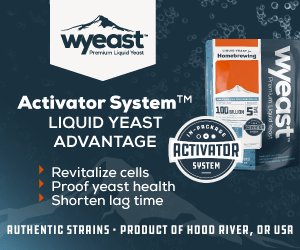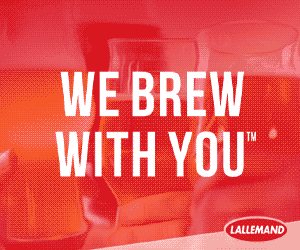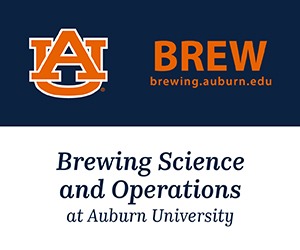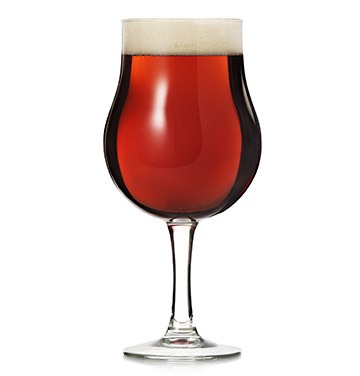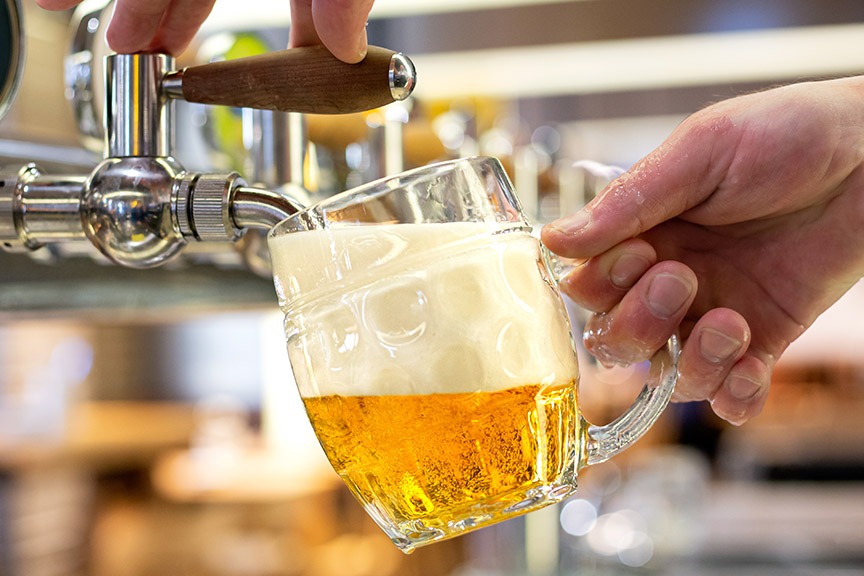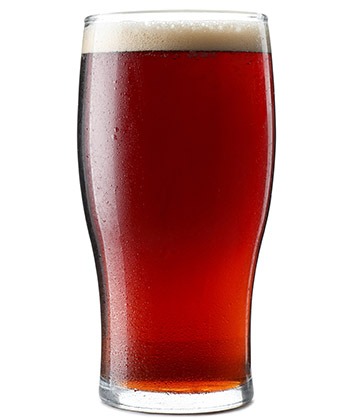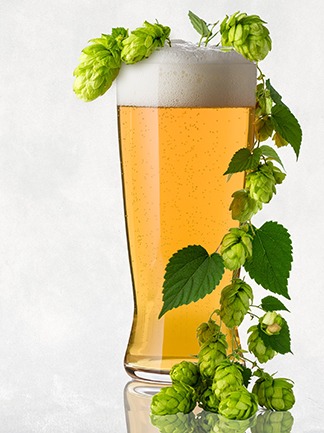American Pale Ale
One of the first American craft beers
I first wrote about American pale ale almost 15 years ago. It’s interesting to compare my contemporaneous musings on the style with my thoughts today; it helps demonstrate how the style has evolved and where it stands in the marketplace. However, it also gives me a sense of longing of the times when you could walk into any brewpub and find this beer along with a full range of styles, rather than nothing but hazy IPAs and fruity sours. I guess that’s another reason why it’s good to be a homebrewer — you can make what you want to drink.
American pale ale (APA) was one of the first craft beer styles in the United States in the 1970s and 80s, and it was a great showcase for newer American hop varieties like the grapefruit-like Cascade. Many pubs featured beers by color, with at least a pale beer, an amber beer, and a dark beer — these were often a pale ale, an ESB, and a brown ale, porter, or stout. Pale ale soon became the largest-selling craft style, a position it held until around 2011 when IPAs ascended. It is still a popular style with homebrewers, although commercially it has largely been replaced with session IPAs.
The Beer Judge Certification Program (BJCP) has American pale ale as style 18B in category 18, Pale American Ale, along with blonde ale. The Brewers Association style guidelines have both American-style pale ale and American-style strong pale ale styles, the latter of which encroaches on the American IPA style.
American Pale Ale History
Early craft beer in the U.S. was influenced by English beer writer Michael Jackson, who wrote about world beer styles. Some of the earliest craft beers were essentially Americanized versions of English styles he described, using American malt, hops, and yeast, which all had different flavor and aroma characteristics from their English cousins. American pale ale was an interpretation of English pale ale (Bass and Samuel Smith’s were two well-known imports then) using more neutral grain and yeast with citrusy and piney American hops.
The first producer isn’t really known, but Sierra Nevada introduced their pale ale in 1980 and it helped spark interest in the style and in craft beer in general. It featured the relatively new Cascade hop, which was released in 1968 and was prominently used in Anchor’s Liberty Ale in 1975. But it was Sierra Nevada Pale Ale that took the hop and style mainstream.
The first producer isn’t really known, but Sierra Nevada introduced their pale ale in 1980 and it helped spark interest in the style and in craft beer in general.
In the early days of craft beer, pale ale had a fairly wide range of color. American amber ale wasn’t recognized as a style until the late 1990s, even though they began appearing in the mid-1980s. When all you have is a pale ale and a brown ale, the color division typically is in the copper range. But adding amber ale allowed pale ales to become more commonly golden in color.
As beers were expanding in color variety, the strength dimension was also subject to experimentation. Strengths of pale ales began increasing, as did bitterness – 3 Floyds Zombie Dust is a good example at 6.2% ABV and 50 IBUs. At the time, IPA was thought of mostly as an English style. The Brewers Association divided the APA style by strength, adding a strong pale ale style for professional competitions. I’m sure at the time entry numbers supported this division, but I suspect this is no longer true. Meanwhile, the IPA style was divided into many variations, including American IPA, which really set the upper bounds for an APA in terms of strength, bitterness, and balance.
Sometime in the mid/late-2010s, session IPAs started becoming popular. The late 2010s were all about hazy IPAs, which were often found in pale ale strengths and less bitterness than traditional IPAs. These had an enduring effect on APAs, as many breweries simply began making these beers instead. With similar colors and alcohol levels (although body and balance were different), the distinction often wasn’t enough to keep some pale ales in the market, such as the truly outstanding Firestone Walker Pale 31. So, today you can find commercial examples that carry on the historic tradition of the style, those that have more IPA-like qualities, and those that are playgrounds for new hop varieties and methods.
Sensory Profile
Given the range of possible interpretations of the style, I think it best to talk about the classic sensory profile of the style for competition purposes since some of the other variations I’ve talked about will judge better in other competition categories.
The color of an APA is pale golden to light amber, but most are golden. The beer is generally clear, with a well-formed white to off-white head. The body is medium to medium-light; it should be neither thin nor heavy. Carbonation should be at least moderate, but can be higher. It is a standard-strength beer, around 5% ABV. All of this sounds fairly normal for an average beer.
Pale ales are bitter beers, but should have some supporting malt backbone evident in flavor and in body. They can have a slight residual sweetness or maltiness, but are generally well attenuated. However, they usually aren’t sharp or crisp. There should be some late hop character evident in the aroma and flavor, but the beer doesn’t need to have any specific variety evident or have a fresh dry-hopped character.
The hop profile can be classic grapefruity citrus and resiny pine, or have some newer hop attributes such as tropical fruit, stone fruit, berry, melon, and the like. The level of hoppiness should seem moderate to moderately high. Bitterness is moderate to high, but shouldn’t have a biting or harsh quality. The malt flavor is relatively neutral, although a light caramel character is traditional. The malt and hop flavors shouldn’t clash, however. The hops should have a stronger presence than the malt, but both should be apparent. The fermentation profile is usually fairly neutral, although a light yeast fruitiness is acceptable.
APA is distinguished from an English pale ale primarily in the malt flavor, lacking the bready, biscuity, or toasty malt flavor; and in the hop profile, lacking the qualities of traditional English varieties like Goldings or Fuggle. Side-by-side, APAs will usually have a more neutral fermentation profile.
If all of this seems vague, I try to remember that an APA is somewhere between a blonde ale and an American IPA. Blonde ales have a similar strength but less bitterness and hoppiness, so they seem less aggressive on the palate. IPAs are higher in alcohol, more bitter, and have a stronger late-hop character, typically with a fresh, dry-hop character. An APA should have more body and malty balance than a session IPA. It should have less color and darker malt flavors than an American amber ale and an American brown ale. Oh, and it should also have a cleaner yeast character than its English and Belgian cousins. If it avoids all these other styles, it is likely in the right space.
Brewing Ingredients and Methods
Sometimes it’s hard to nail down ingredients and methods because people then think that’s the only way you can make a style. It’s important to remember that I talk about how most brewers make the style, and that other approaches are possible. What’s important to me is that the sensory profile of the finished beer is correct, not how it is achieved.
That said, most American pale ales will have a large portion of a pale base malt for the grist. A North American pale ale malt is perfect, but many use 2-row brewer’s malt, lager malt, Pilsner malt, or a mix of several malts. As long as the resulting color doesn’t stray too far into the amber range and the flavor doesn’t get overly bready, biscuity, or toasty, you are likely to be fine. I have tried making APAs with a really characterful English malt like Maris Otter, but I find that I prefer the simpler, cleaner malt profile of the North American malts. Maris Otter can have too much flavor for some styles, and can lead to clashing flavors with the American hops.
Classically, APAs would have a light dose of caramel or crystal malt, something in the 40–80 °Lovibond range. More modern versions might use Munich or some other character malt instead. A wide range of malts are possible including some that bring in a light bready or toasty flavor, as long as it is kept in the background. Some may use dextrin-type malts to enhance the body instead of mash controls. This is generally an all-malt beer, but like some IPAs, it can take a little sugar. Mashing is traditionally a single infusion in the low 150s °F (say, 66–68 °C).

Hops are an area that have changed over time. In the early craft days, Cascade was most common, with bittering, flavor, and aroma additions. As the U.S. hop scene evolved so did the use of hops in this style. More modern U.S. or New World hop varieties can be used, and any hopping method is fair game. Classically, the beers weren’t dry hopped, but late additions carried the aroma. Any methods that emphasize flavor and aroma of hops are welcome and I often use first wort hopping, hop bursting, and hop stands in my beers to good success. But the classic profile would use a strong bittering addition with a significant late hop charge.
Yeast likewise have changed over time. In general, I like to advise using a neutral to lightly fruity American or English strain that emphasizes a clean maltiness. With the advent of cold IPAs, some brewers might be exploring the use of neutral lager yeasts that are warm-fermented. Even something like a clean Kölsch yeast would work. Just keep in mind that you want to choose a yeast that doesn’t bring a large character of its own and you want to avoid anything phenolic.
Water profiles can vary as well, depending on what you like in the profile. Something between a “wet” profile that uses calcium chloride and a “dry” profile that uses calcium sulfate works well. Just avoid carbonates in your water, since those really can interfere with the perception of bitterness. In my area, these can often give beers a soapy quality that hurts drinkability. Like the yeast, the water should help create a neutral playing ground for the hops with malt in support.
Homebrew Example
My recipe is a modernized take of a classic pale ale using some of my favorite ingredients. The base malt is a mix of pale ale, Pilsner, and Munich malts. You can use U.S. 2-row brewer’s malt instead of the pale ale malt. This mix of malts in a 45:45:10 percent ratio is one of my go-to base malt mixes for American beers. Some crystal 60 malt is added for flavor, body, and color, although I have also made this style without it. A simple infusion mash is used.
The hops reflect three of the classic American hops when this style was in its heyday: Cascade, Centennial, and Amarillo®. You can certainly go all Cascade with this beer, or limit your choices to two hops. The hopping methods are a bit more modern, using first wort hopping for a smooth bitterness and increased flavor, and whirlpool hops instead of dry hopping. I’m not trying to go extreme on the bitterness; you should know that you aren’t drinking an IPA.
I’m fond of using the Wyeast 1968 or White Labs WLP002 yeast in this beer, as it gives a clean fermentation with a little fruitiness and helps retain a bit of residual maltiness. I’m using a balanced salt profile in the water with equal parts calcium chloride and gypsum, although I have also made this with all calcium chloride. If you want to use an American yeast, the Chico strain (Wyeast 1056, WLP001, SafAle US-05) is a good choice, but I also really like the Anchor strain too (Wyeast 1272, WLP051, Mangrove Jack’s M36). I sometimes use a little orange blossom honey (0.5–1 lb./230–450 g) in this beer, especially when using the Anchor yeast.
So, I’ve described my base recipe and given you a few options to explore. This is a fairly flexible style and I often use this as a template for experimenting with new hop varieties. The malt is noticeable but definitely in support of the hops. Yet it doesn’t drink like hop juice; there is some backbone to it without getting heavy. It’s a good everyday drinking beer, which is why it once dominated the American microbrew scene. I’m certainly looking forward to it coming back into fashion with a new generation of beer enthusiasts.
American Pale Ale by the Numbers
OG: 1.045–1.060
FG: 1.010–1.015
SRM: 5–10
IBU: 30–50
ABV: 4.5–6.2%
American Pale Ale

(5 gallons/19 L, all-grain)
OG = 1.050 FG = 1.013
IBU = 36 SRM = 7 ABV = 4.9%
Ingredients
5 lbs. (2.3 kg) North American pale ale malt
4 lbs. (1.8 kg) Pilsner malt
1 lb. (454 g) Munich malt
8 oz. (227 g) crystal malt (60 °L)
5.5 AAU Cascade hops (first wort hop) (1 oz./28 g at 5.5% alpha acids)
9.2 AAU Amarillo® hops (5 min.) (1 oz./28 g at 9.2% alpha acids)
1 oz. (28 g) Cascade hops (hopstand)
1 oz. (28 g) Centennial hops (hopstand)
Wyeast 1968 (London ESB), White Labs WLP002 (English Ale), or Mangrove Jack’s M15 (Empire Ale) yeast
3⁄4 cup corn sugar (if priming)
Step by Step
This recipe uses reverse osmosis (RO) water. Adjust all brewing water to a pH of 5.5 using phosphoric acid. Add 0.5 tsp. of calcium chloride and 0.5 tsp. of calcium sulfate to the mash.
This recipe uses an infusion mash. Use enough water to have a moderately thick mash (1.5 qts./lb. or 3.1 L/kg). Mash in the pale malts at 151 °F (66 °C) and hold at that temperature for 60 minutes. Then add the crystal malt and stir. Begin recirculating, raise the mash temperature to 169 °F (76 °C), and recirculate for 15 minutes.
Add the first wort hops to the kettle then sparge slowly and collect 6.5 gallons (24.5 L).
Boil the wort for 60 minutes, adding the Amarillo® hops with five minutes remaining in the boil. The final hops are added about 10 minutes after the boil or when the wort cools to about 180 °F (82 °C). Stir the wort gently and allow to stand for 20 minutes, then chill or begin transferring wort to the fermenter.
Chill the wort to 64 °F (18 °C), pitch the yeast, and ferment until complete. Condition for 5–7 days.
Rack the beer, prime and bottle condition, or keg and force carbonate to 2.5 v/v.
American Pale Ale
(5 gallons/19 L, extract with grains)
OG = 1.050 FG = 1.013
IBU = 36 SRM = 7 ABV = 4.9%
Ingredients
5.6 lbs. (2.5 kg) light dried malt extract
8 oz. (227 g) crystal malt (60 °L)
5.5 AAU Cascade hops (first wort hop) (1 oz./28 g at 5.5% alpha acids)
9.2 AAU Amarillo® hops (5 min.) (1 oz./28 g at 9.2% alpha acids)
1 oz. (28 g) Cascade hops (hopstand)
1 oz. (28 g) Centennial hops (hopstand)
Wyeast 1968 (London ESB), White Labs WLP002 (English Ale), or Mangrove Jack’s M15 (Empire Ale) yeast
3⁄4 cup corn sugar (if priming)
Step by Step
Use 6.5 gallons (24.5 L) of water in the brew kettle; heat to 158 °F (70 °C). Turn off the heat. Add the crystal malt in a mesh bag and steep for 30 minutes. Remove and rinse grain gently.
Add the malt extract and stir thoroughly to dissolve completely. Add the first wort hops. Turn the heat back on and bring to a boil.
Boil the wort for 60 minutes, adding hops at the times indicated. The whirlpool hops are added about 10 minutes after the boil or when the wort cools to about 180 °F (82 °C). Stir the wort gently and allow to stand for 20 minutes, then chill or transfer wort to the fermenter.
Chill the wort to 64 °F (18 °C), pitch the yeast, and ferment until complete. Condition for 5–7 days.
Rack the beer, prime and bottle condition, or keg and force carbonate to 2.5 v/v.

